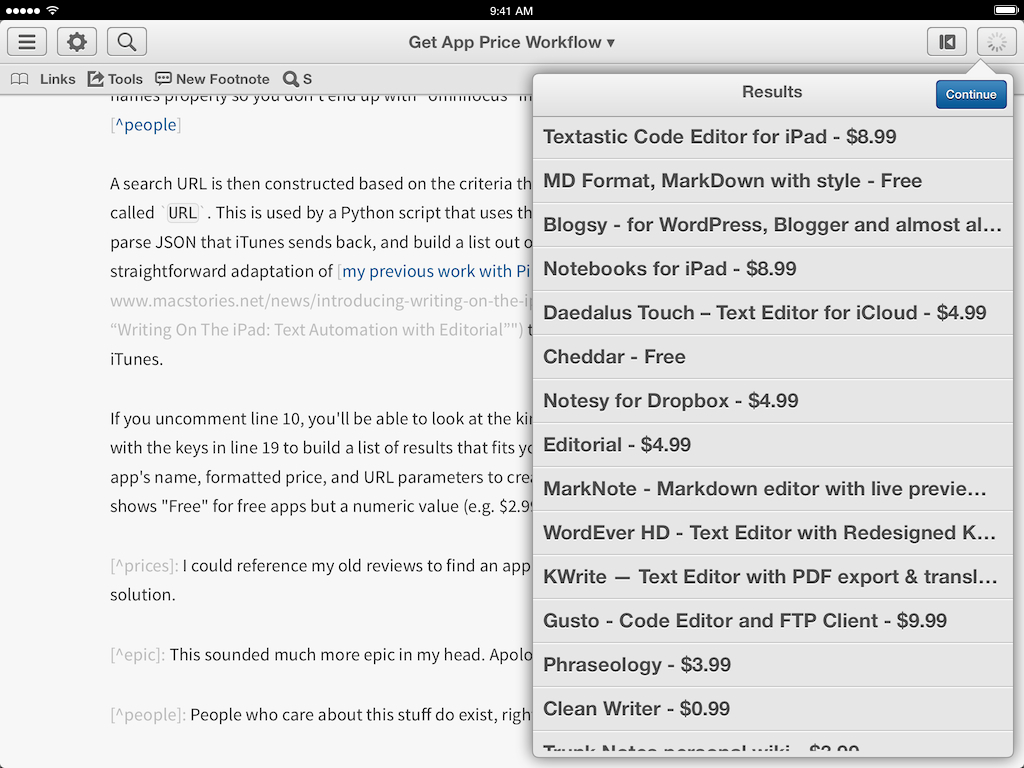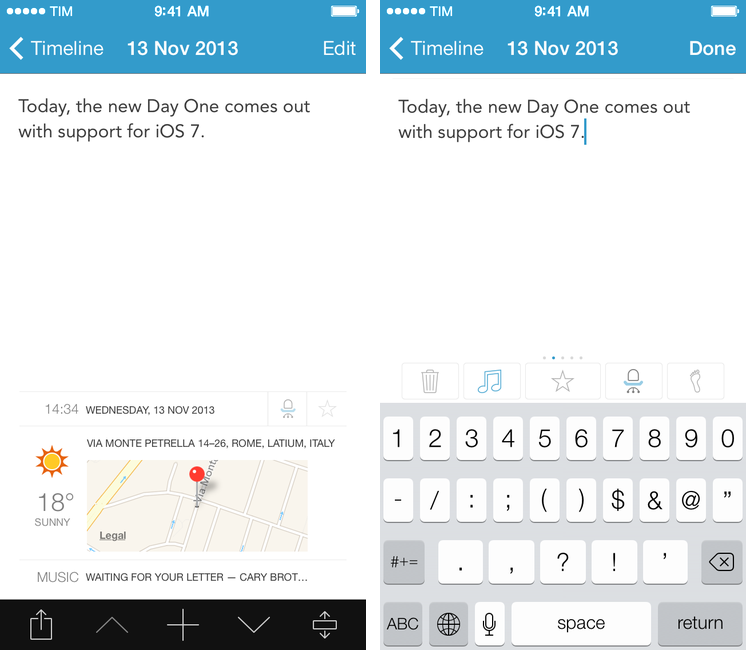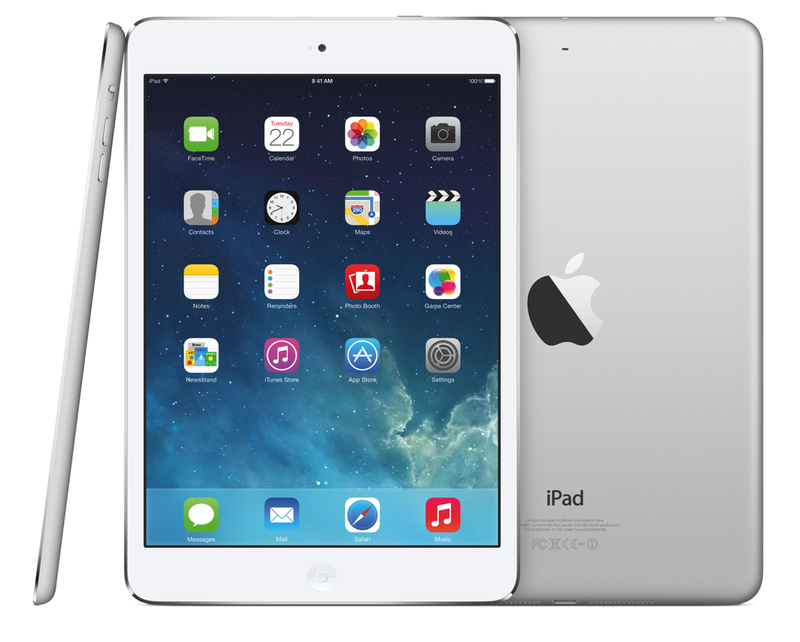When I write on my iPad mini, I often need to look up and reference price of apps that I already own. That’s a surprisingly hard thing to do on an iOS device, so I decided to remove the annoyance caused by this problem with an Editorial workflow. I call it “Get App Price”.
If you own an app, searching for it in the iOS 7 App Store won’t show you the price information alongside the app’s icon and description – you’ll only get an Open or Install button. Unlike the Mac App Store, there is no separate pricing field in the app information at the bottom of the screen, which usually forces me to go to a developer’s website to find out what the price of an app is.1 There wouldn’t be any problem if Apple allowed Safari to open iTunes web previews without redirecting them straight to the App Store, which is what they do on OS X. I have tried to force Safari to open web previews, and I even downloaded browsers that can set a modified user agent string to trick iOS into thinking they’re desktop web browsers worthy of a web preview – eventually, the App Store app always opened, displaying no price.
I set out to create a simple workflow to fetch an app’s title and price directly from iTunes with no clipboard import or other middleman. I later found out that you can tap on the “Related” tab in the App Store or gift an app to view its price, but I had already created a workflow that’s faster than opening the App Store and tapping a bunch of buttons just to get a price. I’m a free man, and I deserve my own App Store lookup solution.2




